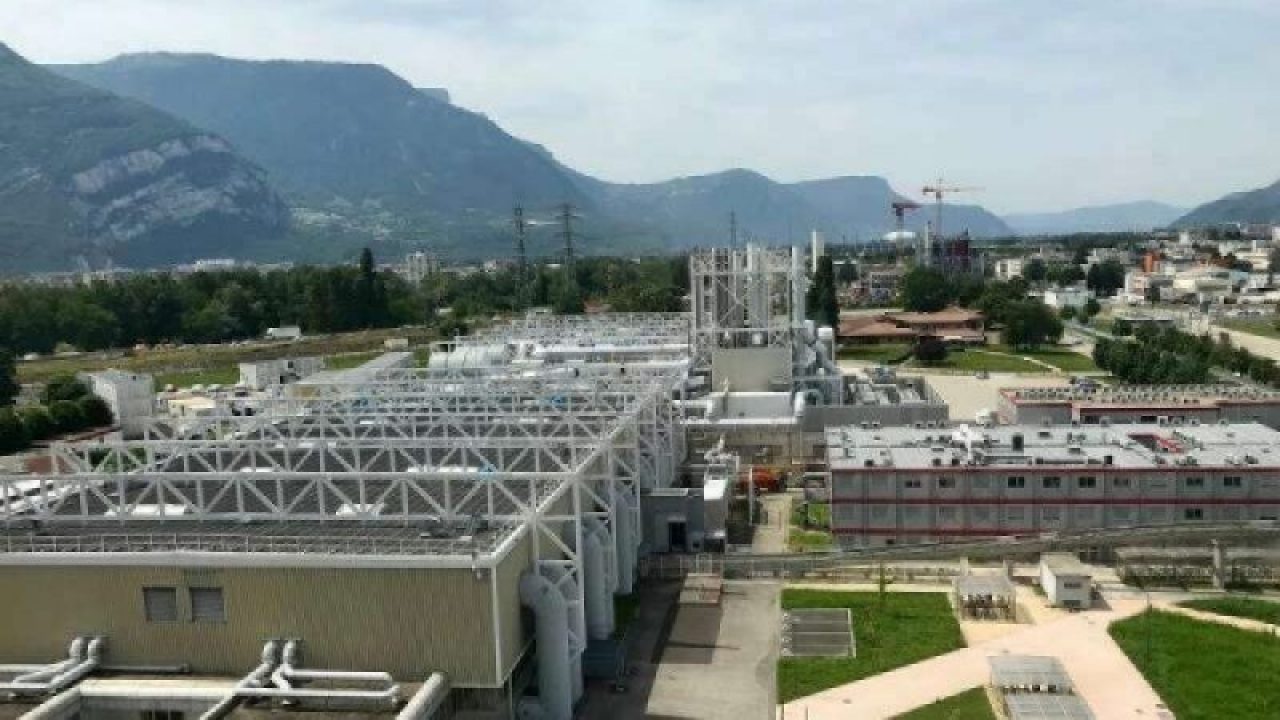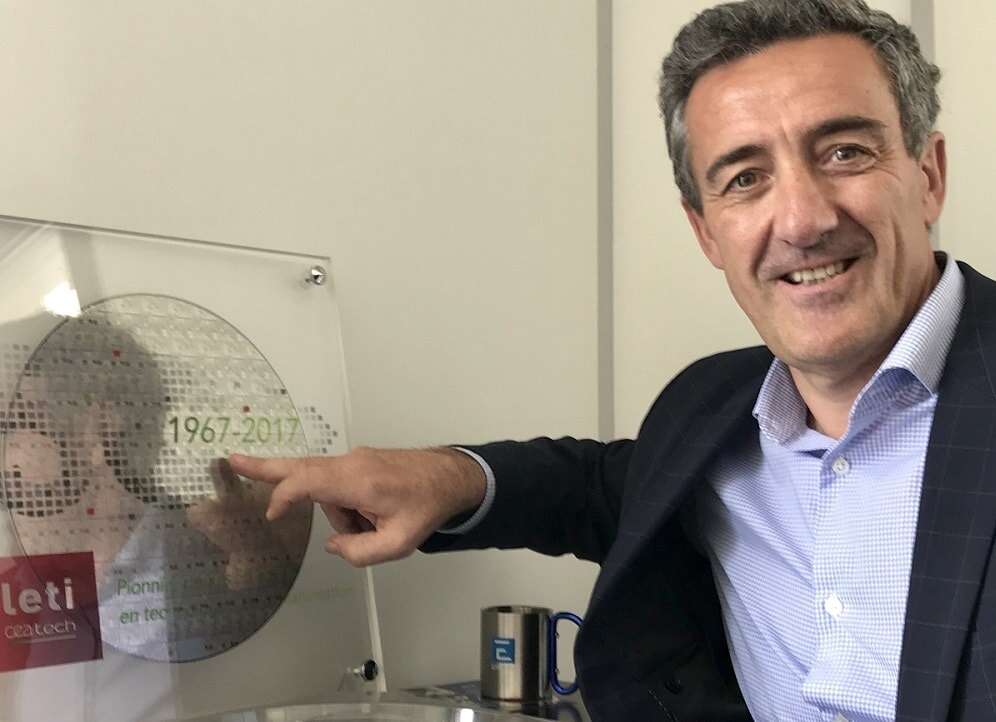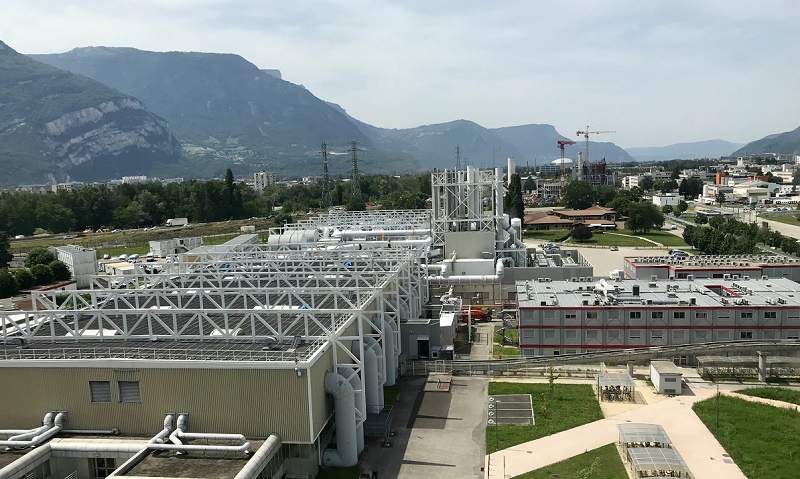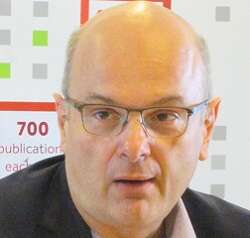Global AI Race Divided Over Data Privacy
Article By : Junko Yoshida

Europe declares that AI R&D must focus on "Edge AI." Strict data privacy regs are "shaping Europe to manage its AI research strategy very differently."
GRENOBLE — In the world of AI research, Europe has drawn a line in the sand, declaring that R&D must focus squarely on “Edge AI.”
This proclamation draws a stark contrast to “Cloud-based AI,” the model aggressively pursued by China and the United States. During “Innovation Days” hosted here by French research institute CEA-Leti this past week, Emmanuel Sabonnadiere, CEA-Leti’s CEO, discussed the “two schools of AI research” that have split the world in two.

Both the U.S. and China have been collecting massive amounts of data which they use for training AIs, the basis for their claims they lead the world AI race. Strict data privacy regulations in Europe might be seen as impeding European companies’ progress in AI, but that’s not necessarily the case. Conforming to those regulations is instead “shaping Europe to manage its AI research strategy very differently,” said Sabonnadiere. Once AI is trained in the cloud, Europe sees its role as applying further learning and personalization to “Edge AI.”
Is Europe behind in AI?
This prompts the question of whether Europe is really lagging in the race for AI. The answer: not necessarily. To begin with, from a worldwide perspective, AI research is barely out of the starting gate.
It’s easy to dismiss the notion of “Edge AI,” given that it’s something plenty of companies say they’re already doing. That’s true to the extent that everybody seems to be slapping AI accelerators into smartphones and calling it “AI at the edge.” To be clear, when CEA-Leti talks about “Edge AI,” this means its researchers are thinking about technology used in inferences that go way beyond current edge AI practices.
Sabonnadiere explains that Edge AI is “a huge challenge,” one that Europe “absolutely must solve,” given that data privacy rules aren’t going away.
By definition, solving big challenges requires innovation. CEA-Leti and its researchers have laid out a 10-year roadmap for Edge AI. The technologies range from 3D stacking to in-memory computing and on-die integration of resistive non-volatile memories. Advancements in such areas will help reduce energy per operation.
The key to frugality with power consumption at the edge, said CEA-Leti’s Francois Perruchot, is: “Do not move data,” from an external memory block to an AI processor. Every time data moves, AI power consumption spikes at the edge by 100 to 1000 times,” he noted. Perruchot is director of strategic marketing on sensors at Leti.
In parallel, reducing the number of AI operations at the edge is crucial. CEA-Leti is exploring a neuromorphic approach to data processing and spike-coding for deep neural network processing of sensor inputs.
10 TOPS per watt
The goal for CEA-Leti’s Edge AI research is to develop — over five years — “an Edge AI processor running at 10 tera-operations per second (TOPS) per watt,” said Sabonnadiere. This requires a combination of new memory architecture, spiking algorithms and sensor arrays. Once achieved, he said, “this will be a game changer.” It will be a sharp contrast to a typical current GPU running at 1 TOPS per 200 watts, according to CEA-Leti.
In Sabonnadiere’s view, data privacy has created an R&D opportunity unique to Europe. This poses a constraint for European researchers, but it also forces them to tackle the issue head on, an arduous process the rest of the world has barely pondered. It remains to be seen if Edge AI will indeed enable Europe to win the global AI race, but at least it is a goal Europe can use to differentiate its AI research from the rest of the world.
AI without hardware?
CEA-Leti’s CEO regards as a huge asset its 50-year history of R&D deeply involved in testing and manufacturing of microelectronics.

AI research in Silicon Valley has profited hugely from algorithms advanced by technology platform companies such as Facebook, Google, Amazon and Microsoft. Further, Sabonnadiere acknowledged that AI research success by those Internet giants — “without spending big capital expenditures” — has spun the narrative that AI is ruled by AI software algorithms. However, he stressed that “AI without hardware” will eventually hobble AI’s potential.
AI researchers in Europe are also cognizant that the overwhelming hype around AI among investors, media and the public could kill AI prematurely. Noting that the long history of AI has gone through cycles of “AI winter,” Sabonnadiere said, “We could face yet another ‘deep freeze.’”
AI, he said, must stand on two pillars of discipline: “Edge AI” and “Trusted AI.”
AI that tells us ‘I don’t know’
By Trusted AI, he means, AI that respects privacy, can explain itself, and is responsible and reliable.

Patrick Gros, CEO of the Inria/Grenoble, French Institute for Research in Computer Science and Automation, explained AI bluntly. “AI isn’t intelligent. If there is any intelligence, it is in AI developers.” AI, in the simplest terms, can be explained as “brute force applied to data,” he noted. The probabilistic nature of AI could also make it problematic. The issue is not that AI makes the right decisions all the time. When the outputs of an AI decision miss predictions by a mile, “We need AI to tell us, ‘I don’t know,’” said Gros.
AI’s confidence in its own decision-making greatly matters when AI is used in life-critical systems, be it an autonomous car, an airplane or a medical device.
One good example is Diabeloop, a startup working in partnership with CEA-Leti. The company has developed a type-1 diabetes management system, already approved by regulators in Germany and France. It monitors a patient’s blood sugar and reproduces the pancreatic function. The startup’s CEO, Erik Huneker, told us that because diabetics have “immensely varied” lifestyles and needs for insulation injection levels, it’s important that the AI system “locally learn” the patient’s needs and “personalize” the system.

Describing the system as “the first autonomous medical device that makes a decision,” Huneker said, “When AI’s decision deviates from predictions by 40 percent, the system shuts itself down. It would not send insulin automatically.” In other words, the device is run by two systems — an autonomous system to execute local learning and a deterministic system to prevent the AI-driven device from injecting the wrong insulin dosage.
AI needs formal certification
The factors that make AI system systems “less robust” and “unfair” are the incomplete data sets often used to train AI, Inria’s Gros added.
It’s not enough for companies to say, “We did our best” to make AI reliable, stressed Gros. “We need to formally certify that [AI-driven] systems are fair.” Unlike smartphones that could miss an “event” or two in receiving sensory data, life-critical AI systems must be designed based on “ethical and legal AI frameworks,” said Gros. “And they must be “formally certified.”
Global alliances
The world might have once viewed CEA-Leti as a famed research institute whose influence didn’t reach far beyond Grenoble, or France at large.
Not true, said Sabonnadiere. The network of CEA-Leti partners is expanding and extending beyond Europe.
Three years ago, 400 people attended CEA-Leti’s “Innovation Days.” This year, there were 800 attendees, according to Sabonnadiere, including representatives from companies around the world.
Jawad Nasrullah, co-founder and CTO of zGlue, a chiplet startup, was among one of them. He told us that he came here because CEA-Leti’s event was highly recommended by a professor at Stanford University who works in Stanford’s System X Alliance.
Indeed CEA-Leti’s collaboration with Stanford is progressing nicely, according to Sabonnadiere. For example, the cooperation has resulted in the development of the world’s first circuit integrating multiple-bit non-volatile memory (NVM) technology, resistive RAM (RRAM) with silicon computing units. The new memory resiliency provides two to three-times the capacity of existing RRAM. When it was unveiled at International Solid-State Circuits Conference (ISSCC) earlier this year, CEA-Leti said that target applications include “energy-efficient, smart-sensor nodes to support artificial intelligence on the Internet of Things, or ‘edge AI.’”
Sabonnadiere said that CEA-Leti also has a project with MIT in cancer research. The joint team has developed a label-free microfluidic technique to extract cells, bacteria, viruses, nucleic acids, etc., from complex biofluids for further analysis or manipulation. The team called it “an essential step for most biological applications.”
CEA-Leti is also forging tighter collaborations with its fellow research institutes in Europe such as IMEC (Belgium) and Fraunhofer (Germany), according to Sabonnadiere. In search of a bigger pool of R&D budget from European Union, “we are encouraged to closely work together,” he explained. “CEA-Leti has pioneered the development of low-energy power consumption FDSI process, while IMEC is advancing FinFET technology. Meanwhile, Fraunhofer is strong with back-end packaging. We all have different strengths that we can leverage.” Late last fall, IMEC and CEA-Leti announced that they are joining forces on artificial intelligence and quantum computing.
Leti and IMEC, however, maintain two different models when it comes to industry partnerships, according to Sabonnadiere. IMEC adheres to a model — “let’s pool money” among different companies — to advance the next silicon process node technologies, for example. In contrast, “We at Leti are all about establishing a bilateral — one-to-one — partnership,” he explained.

Ongoing relationship with STMicroelectronics
While CEA-Leti as a research laboratory works on technology building blocks essential to its long-term “Edge AI” goals, STMicroelectronics, CEA-Leti’s long-established partner, is offering the company’s widely available STM32-based edge AI solution for system vendors — as something the engineering community can use right now.

ST’s tool, called Cube.AI can convert neural networks into optimized code for STM32 MCUs, explained Claude Dardanne, president of microcontrollers & digital ICs group at ST.
“But we are not standing still,” said Dardanne. Over the next 18 months, ST is rolling out a new microprocessor dedicated to AI and an advanced MCU integrated with a hardware accelerator, he explained, while speaking on the stage during CEA-Leti’s Innovation Days.
Subscribe to Newsletter
Test Qr code text s ss


